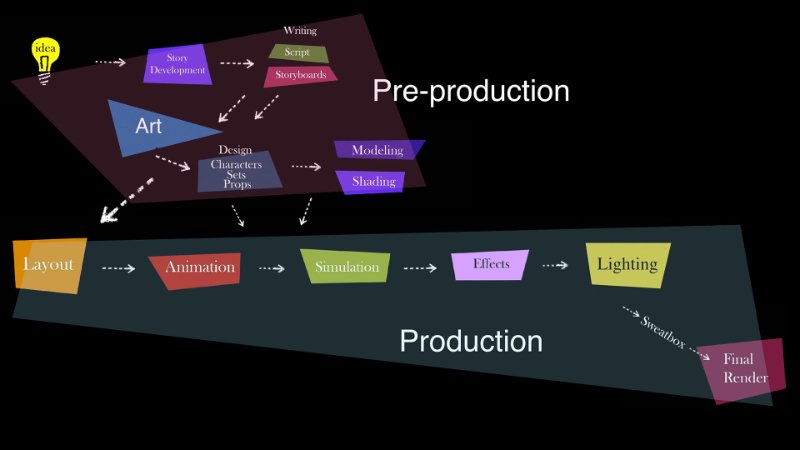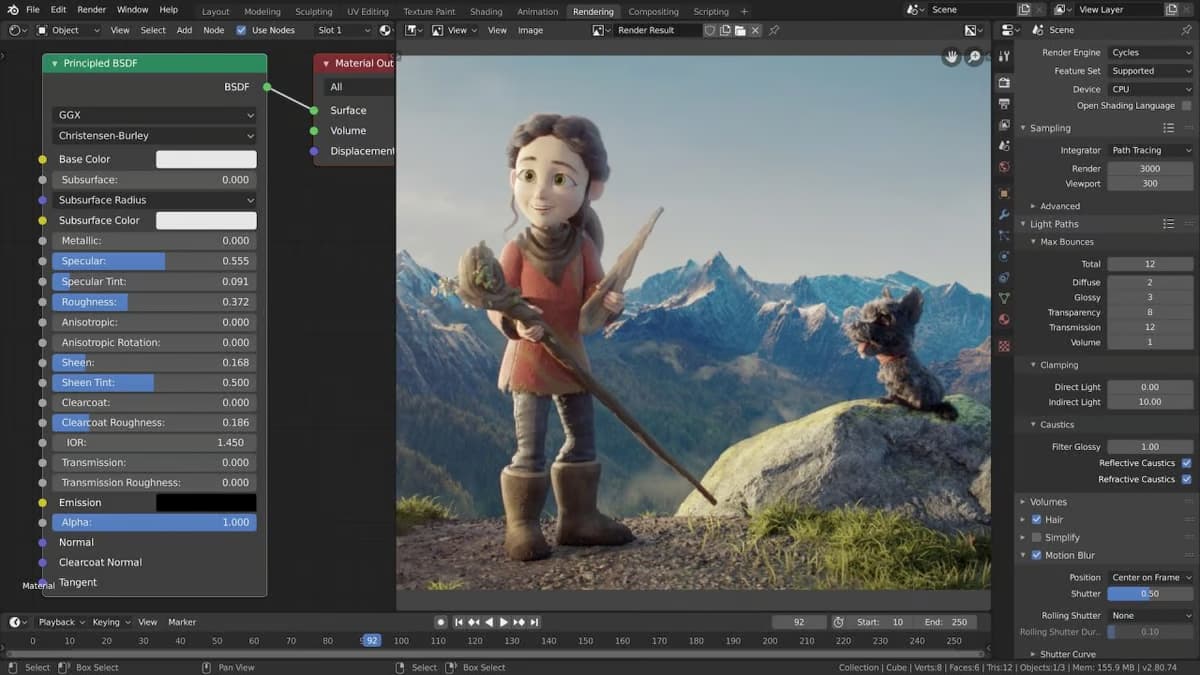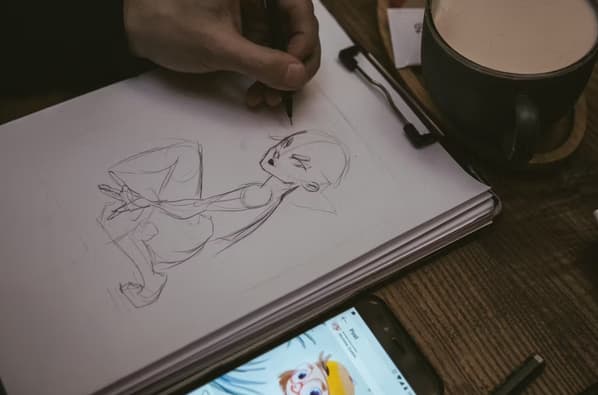Welcome to the realm where imagination meets technology, where dreams take form through pixels and polygons. Animation, a captivating medium that has transcended entertainment to become an integral part of our cultural landscape, is a testament to human creativity and ingenuity. Behind the mesmerizing visuals and compelling narratives lies a meticulously crafted framework known as the animation pipeline. In this article, we embark on a journey to unravel the intricacies of this dynamic process, exploring its components, significance, and impact on the world of animation.
What is an Animation Pipeline?
At its core, an animation pipeline is a structured framework that outlines the sequential stages involved in creating an animated project. It serves as a roadmap, guiding artists and technicians through each step of the production process, from initial concept to final rendering. The animation pipeline streamlines workflows, enhances collaboration, and ensures efficiency in delivering high-quality animation within predetermined timelines.
The Components of an Animation Pipeline
A typical animation pipeline comprises several key components, each playing a vital role in the overall production process:
- Pre-production: This initial phase involves conceptualization, storyboarding, character design, and script development. It sets the foundation for the project, outlining its visual style, narrative structure, and creative direction;
- Production: Once the pre-production phase is complete, the production stage begins, encompassing tasks such as modeling, rigging, texturing, and animation. Artists bring characters, environments, and props to life, breathing personality and movement into static designs;
- Post-production: During post-production, the focus shifts to refining and enhancing the animated sequences. This phase includes tasks such as lighting, shading, compositing, and visual effects (VFX), adding depth, realism, and polish to the final output;
- Rendering: Rendering is the process of generating the final images or frames from the 3D scene. It involves computing complex lighting calculations, textures, and camera angles to produce visually stunning sequences ready for viewing;
- Editing and Sound Design: The final stage of the pipeline involves editing the rendered footage, integrating sound effects, music, and dialogue to enhance the overall cinematic experience. This step adds depth, emotion, and coherence to the narrative, ensuring a seamless viewing experience for audiences.
In the intricate world of animation, the pipeline serves as the backbone, guiding artists and technicians through a series of meticulously planned stages. Let’s unravel the components of this dynamic framework:
- Pre-production:
- Conceptualization: This stage involves brainstorming ideas, developing concepts, and crafting the overall vision for the project;
- Storyboarding: Creating sequential illustrations that outline the key scenes, camera angles, and transitions to visualize the narrative flow;
- Character Design: Crafting the appearance, personality, and traits of characters to resonate with the audience and complement the story;
- Script Development: Writing and refining the script, dialogue, and narrative structure to establish the foundation for the animation.
2. Production:
3. Post-production:
- Lighting: Setting up virtual lighting environments to establish mood, atmosphere, and visual appeal;
- Shading: Applying shaders and materials to surfaces to simulate various materials such as metal, wood, or fabric;
- Rendering: Generating final images or frames from the 3D scene, incorporating lighting, shading, and camera effects;
- Compositing: Integrating rendered elements, adding visual effects, and fine-tuning the overall look and feel of the animation.
4. Editing and Sound Design:
- Editing: Assembling and arranging sequences, refining transitions, and pacing to enhance storytelling and engagement;
- Sound Design: Incorporating sound effects, music, and dialogue to evoke emotion, immerse the audience, and complement the visual experience.
5. Quality Assurance and Iteration:
- Testing: Reviewing the animation for errors, glitches, or inconsistencies and making necessary adjustments;
- Feedback and Iteration: Seeking feedback from stakeholders, peers, or test audiences and iterating on the animation based on constructive criticism and creative input.
6. Delivery:
- Exporting: Converting the final animation into the desired format for distribution, whether it be for film, television, streaming platforms, or the web;
- Archiving: Organizing and storing project files, assets, and documentation for future reference, re-use, or archival purposes.
Each component of the animation pipeline plays a crucial role in the creation of captivating visuals and compelling storytelling, driving the project from conception to completion with precision and artistry.
The Workflow of an Animation Pipeline
While the specific workflow may vary depending on the project’s scope, scale, and artistic vision, the animation pipeline typically follows a structured sequence of tasks:
- Conceptualization: Brainstorming ideas, developing concepts, and creating storyboards to visualize the narrative and pacing of the animation;
- Asset Creation: Building 3D models, textures, and rigging characters and props to prepare them for animation and rendering;
- Animation: Bringing characters to life through movement, expression, and performance, choreographing sequences to convey emotion, action, and storytelling;
- Lighting and Rendering: Setting up virtual lighting environments, applying shaders, and rendering final frames to achieve desired visual aesthetics;
- Compositing and Effects: Integrating rendered elements, adding visual effects, and fine-tuning the overall look and feel of the animation.
Assembling final sequences, refining transitions, and exporting the completed animation in the desired format for distribution or screening.
The Significance of an Animation Pipeline
An efficient animation pipeline is crucial for maximizing productivity, minimizing errors, and maintaining artistic consistency throughout the production process. By establishing clear workflows, communication channels, and quality standards, an animation pipeline enables creative teams to collaborate seamlessly, iterate rapidly, and deliver compelling animations that resonate with audiences.
The animation pipeline isn’t merely a structured framework; it’s the lifeblood of the animation industry, embodying efficiency, collaboration, and creativity. Here’s why it holds such immense significance:
- Maximizing Productivity: By breaking down the production process into sequential stages, the animation pipeline streamlines workflows, reduces redundancies, and enhances productivity. It enables creative teams to focus on specific tasks without getting overwhelmed by the complexity of the entire project, resulting in faster turnaround times and increased output;
- Maintaining Consistency: Consistency is key to creating a cohesive and polished animation. The pipeline ensures that artistic styles, character designs, and storytelling elements remain consistent throughout the production process. By adhering to established guidelines and standards, the pipeline fosters uniformity and coherence, elevating the overall quality of the animation;
- Facilitating Collaboration: Animation is a collaborative art form that requires the collective efforts of artists, animators, technicians, and directors. The pipeline provides a framework for effective communication, collaboration, and coordination among team members across different departments and disciplines. It fosters a sense of cohesion and unity, enabling individuals to work together seamlessly towards a common goal;
- Enabling Iteration and Feedback: The iterative nature of the animation pipeline allows for continuous refinement and improvement throughout the production process. By seeking feedback from stakeholders, peers, and test audiences at various stages, creative teams can identify areas for enhancement, address issues, and make necessary adjustments to elevate the quality of the animation. This iterative approach fosters creativity, innovation, and growth, pushing the boundaries of what’s possible in animation;
- Ensuring Efficiency and Cost-Effectiveness: In the fast-paced world of animation production, time is of the essence. The pipeline helps to optimize resources, minimize wastage, and adhere to project timelines and budgets. By establishing clear workflows, milestones, and deliverables, the pipeline enables studios to operate more efficiently and cost-effectively, maximizing the return on investment and profitability of the project;
- Empowering Creativity: Despite its structured nature, the animation pipeline isn’t rigid or restrictive; it’s a framework that empowers creativity and artistic expression. By providing a roadmap for the production process, the pipeline gives artists the freedom to explore, experiment, and push the boundaries of their craft. It encourages innovation, risk-taking, and bold storytelling, resulting in animations that captivate, inspire, and resonate with audiences worldwide.
In essence, the animation pipeline isn’t just a technical tool; it’s a testament to the passion, dedication, and artistry of the individuals who bring animated worlds to life. It’s a dynamic framework that embodies the collaborative spirit, creative ingenuity, and unwavering commitment of the animation industry, shaping the future of storytelling one frame at a time.
Conclusion
As we conclude our exploration of the animation pipeline, it becomes evident that this structured framework is more than just a series of steps; it’s a testament to the collaborative spirit, innovation, and artistry that define the animation industry. From conceptualization to delivery, the pipeline serves as a guiding light, illuminating the path for creative teams to transform ideas into immersive experiences that captivate audiences worldwide.
As technology continues to evolve and new storytelling techniques emerge, one thing remains constant: the animation pipeline will continue to serve as the backbone of this ever-evolving art form, empowering creators to push the boundaries of imagination and bring their visions to life.



